#japanese royal family
Explore tagged Tumblr posts
Text
At first I thought this might be an early April Fool's Day prank but...the Japanese Imperial Family are finally joining social media!
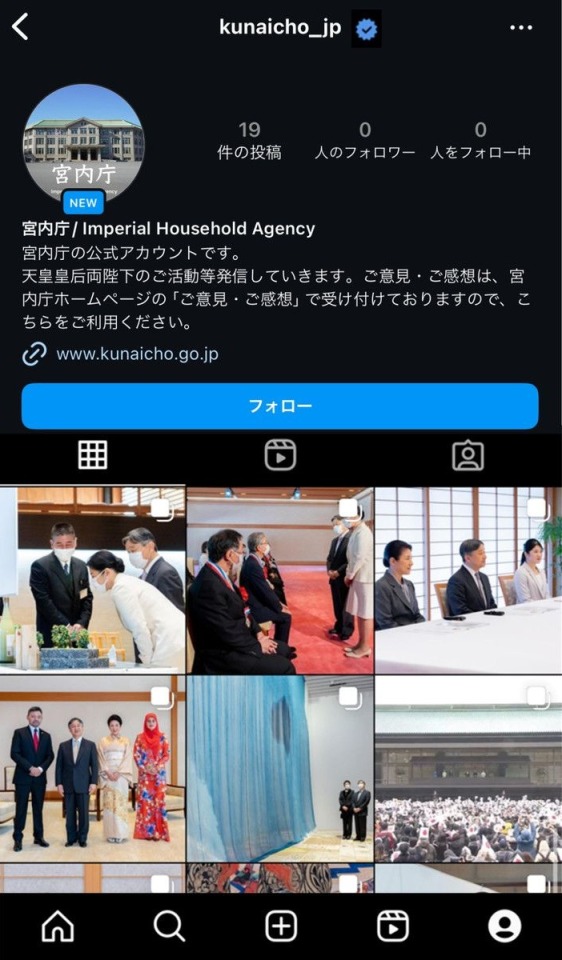
The Imperial Household Agency, the organization that controls the imperial family, have been debating joining social media for years and I didn't think it would ever actually happen. They have announced that their Instagram account will become active on April 1st, hence the April Fool's Day prank thing. For the time being, this will be their only social media but they are also considering Twitter and Facebook.
My excitement dimmed a little when I read that the account will only post about Emperor Naruhito and Empress Masako. The extended family's events are so rarely covered and this would have been a great way to stay up to date about them. The IHA says that they are also considering expanding the scope of the family that is featured so I hope that changes sooner rather than later.
Sorry about the non tiara post but I was so surprised I had to share. As always if you are interested in the JIF, I recommend following @ImperialJPNfan on Twitter. There are also rumors that the state visit from Japan to the United Kingdom that was postponed due to the pandemic will finally take place in June so everyone cross your fingers!
78 notes
·
View notes
Text

Chichibu Pearl Drop Tiara ♕ Yuriko, Princess Mikasa (assumed)
66 notes
·
View notes
Text
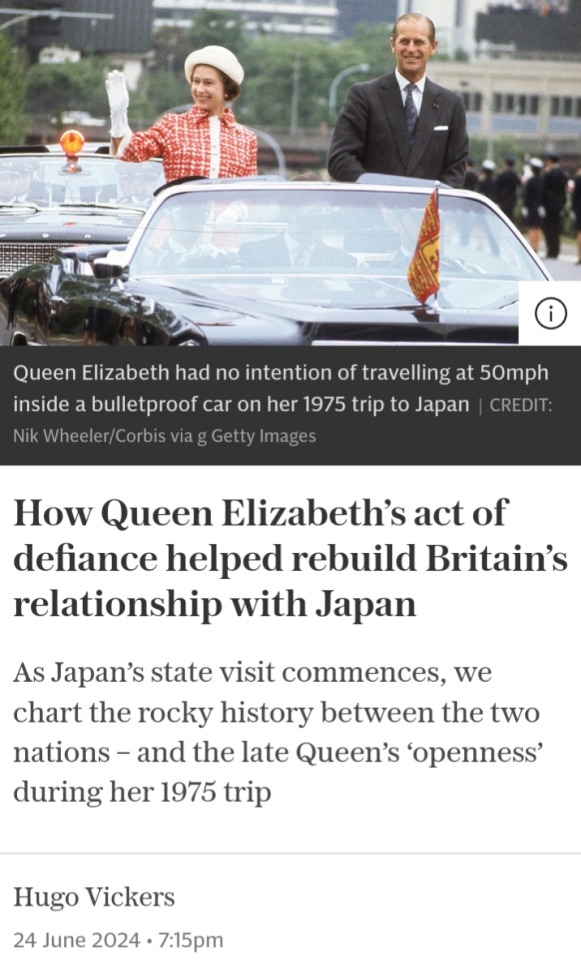
General elections are hardly famous for diplomatic exchanges.
But Rishi Sunak and Keir Starmer are sure to learn some lessons in pragmatism when Emperor Naruhito officially begins his state visit on 25 June.
What will they talk about if they attend the formal banquet at Buckingham Palace, as they are both expected to do, and at which they will perhaps be just a few seats apart?
Naruhito’s unexpected love of the Thames Barrier – he studied the history of cargo-carrying on the river during his spell at Oxford University – will surely appeal.
But the manner in which the British and Japanese royal families have rebuilt bridges after the deep scars of the Second World War might be a more illuminating place to start.
Those scars – the result of Japan’s crimes across the Asia-Pacific and the cruel treatment of British prisoners of war – had left a legacy of resentment that lasted long after the hostilities officially ceased in 1945.
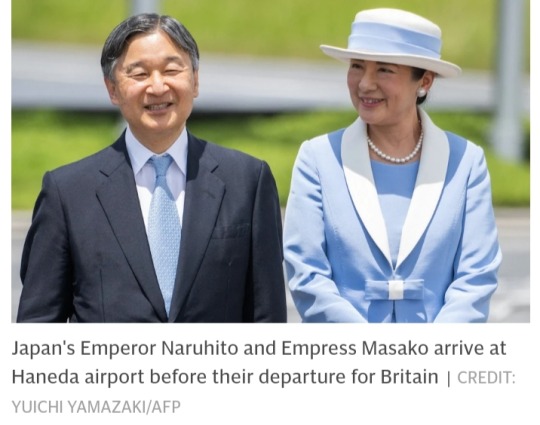
The pressure was on the young Queen Elizabeth II to restore good relations.
Though she rose to the occasion, making huge progress during her reign, the reconciliation was gradual to say the least.
In fact, when official diplomatic relations were restored in 1952, proceedings nearly fell at the first hurdle – over the Emperor’s Garter star.
When the new British Ambassador, Sir Esler Dening, presented his credentials to Emperor Hirohito, the Emperor’s household asked the British Foreign Office if he should wear what they called his “Garter rosette” when he received the ambassador.
The BFO said they preferred that this question had not been asked in the first place, given that Hirohito had of course picked the wrong side to align with during the war.
The exchange also highlighted what a delicate issue Garter honours had become.

To rewind: It’s a tradition for Japanese Emperors to be made British Knights of the Garter.
By 1952, three had had the honour:
Emperor Mutsuhito, who was appointed in 1906 in recognition of the Anglo-Japanese Alliance of 1902; Emperor Yoshihito in 1912, and his son, Emperor Hirohito in 1928.
Emperor Mutsuhito, who was lucky to be appointed in the first place, had never actually left Japan, and Edward VII did not want him to have it because Mutsuhito was a non-Christian monarch.
But Edward changed his mind after Japan’s 1905 victory over Russia and sent Prince Arthur of Connaught to Tokyo on a Garter mission to present the Emperor with the insignia.
Back then this journey was no trifle:
It took Arthur a month to sail from Marseilles to Yokohama to ask Mutsuhito to accept “the highest mark of friendship and esteem which it is in His Majesty’s power to bestow."
The Emperor was so delighted by the honour that he broke tradition and personally received him at the Imperial Palace.
Yoshihito made it out as far as Korea, but his disabilities and sickly disposition prevented him from much else.
His son Hirohito, meanwhile, was much more used to overseas visits.
He’d already visited Britain as part of a European tour in 1921, when he was a rather shy Crown Prince (the Duke of Windsor, as the Prince of Wales, visited Japan the following year).
After Hirohito succeeded as Emperor in 1926 he was appointed to the Garter, which was the cue for another long trip from England to Japan (this time by Prince Henry, Duke of Gloucester) to invest him.
But during the Second World War, Hirohito was regarded as an enemy alien, and his Garter banner was removed from St George’s Chapel and “placed in the vaults.”
Did he know of his demotion? Surely Dening would have maintained a dignified silence when he was pitching his ambassadorial services in 1952.
But the missing banner did cause minor concern ahead of Crown Prince Akihito’s visit to represent his father at the 1953 Coronation.
Luckily, when he laid a wreath in St George’s Chapel in honour of Queen Mary, who had lately died, he did not notice the absence of the Imperial banner.
Instead, his mind was on more youthful pursuits: during his visit, he was keen to go racing and attend Wimbledon.
Ever the astute hostess, the Queen duly invited him to the Derby.
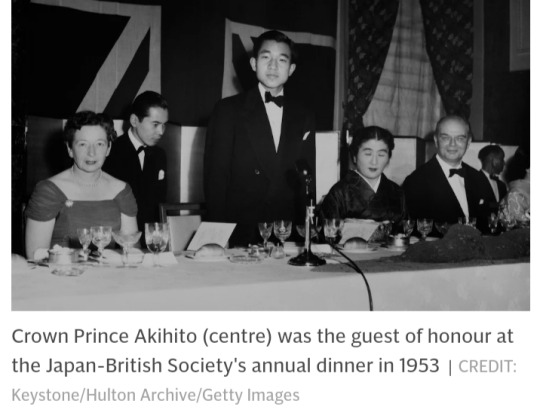
In those early post-war days, the bridge of cordiality that was slowly being built between Japan and Britain was as fragile as kintsugi porcelain.
A more important step towards reconciliation was needed and that came in 1961 when Elizabeth II’s cousin, Princess Alexandra, visited Japan.
She was accompanied by her mother’s private secretary, Sir Philip Hay, who had been a prisoner of war in the Far East, as a result of which he suffered recurring malaria.
Princess Alexandra found the Japanese very friendly but received letters asking why she had gone, since their families had suffered so gravely.
She told me that she gave him a “bottom scraper,” an unfortunately named device used for trawling the sea bed.
He was a marine biologist, having written several books on the subject and collected these objects.
Perhaps this inspired his grandson’s interest.
Whatever the Emperor made of his aquatic gift, he was undoubtedly more pleased by the fact that, during her visit, he was allowed to wear his Garter star.
During these and subsequent years, Princess Chichibu, the Emperor’s sister-in-law, worked tirelessly to improve Anglo-Japanese relations.
Her father had been Japanese Ambassador to Britain and she had been born in Walton on Thames.
With her husband, Prince Chichibu, she had attended the 1937 Coronation.
She became Patron of the Japan-British Society in Tokyo and had a prominent role during Princess Margaret’s visit for British Week in 1969.
At the time, Prince William of Gloucester even served at the British Embassy.
In 1970, King Charles III (as Prince of Wales) visited Japan, and the following year marked the first ever state visit by a Japanese Emperor to Britain when Hirohito landed on our shores once more.
When he accepted Queen Elizabeth II’s invitation, he addressed her as “Madam My Sister” and signed it “Your Majesty’s Good Brother.”
He added in his letter:
“I once visited your country when I was the Crown Prince and have always cherished the pleasant memories of it.”
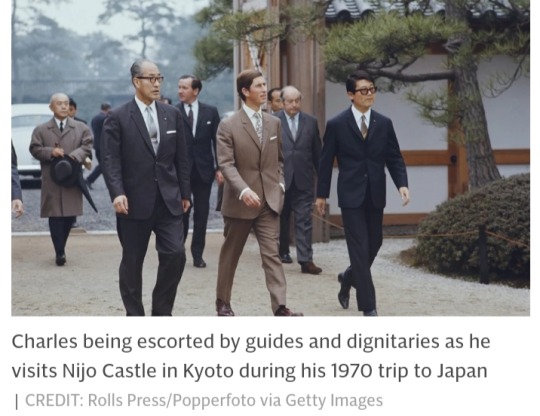
It was enough to restore his full diplomatic standing: he was quietly reinstated into the Order of the Garter, and a new banner raised over his stall.
The British newspapers were less forgiving:
Private Eye produced a particularly disparaging front cover, and David Walker, at the Foreign Office, wrote that his impression was “that the press became more hostile as the visit wore on.”
The public made their feelings known too: though the Emperor’s arrival at Victoria passed off smoothly, a man was arrested in the Mall for a mild incident, and a protester dug up the tree the Emperor planted at Kew.
Many more favourable column inches were devoted to the visit in the Japanese press, but the British Ambassador conceded: “the misdeeds of the past still remain alive.”
The return state visit by Queen Elizabeth II and Prince Philip in 1975 was a game-changer, however.
As part of it, the Queen wanted to drive through Tokyo in an open convertible Cadillac.
But Sir Fred Warner, the British Ambassador, was aware that there was “a tradition in Japan of political assassination” and that the Japanese police had a “proper fear” for the Queen’s safety.
President Gerald Ford had visited shortly before and had been guarded by an astonishing 160,000 Japanese police.
As Warner put it, “might as well have been wearing a cloak of invisibility.”
The original plan for the Queen was that everywhere she went, she should be driven at 50mph in a car with dark bullet-proof glass.
Unsurprisingly, this held no appeal for her: the Queen got her way and what became known as “the Open Car Drive” passed into Japanese history.
Since it passed off well, the Japanese police emerged as heroes of the plan.

The effect was that the Emperor, who led a somewhat cloistered existence, was impressed by the openness of the British Royal family.
The members of the Imperial family “felt that a window had been thrown open and a gust of fresh air let into their lives.”
On both sides, the overwhelming view was that the Queen’s visit, with its innovative approach to visibility, had “marked a significant step towards reconciliation and renewal of old friendships.”
Prince Philip played his part too, making a virtue of lying by omission.
During the state visit he was frequently asked: “Your first visit to Japan?”
“Yes”, he said.
In truth, he had been in Japan in 1945 at the time of the Japanese surrender.
When Emperor Hirohito died in 1989, Prince Philip volunteered to represent the Queen, feeling he was the right person to do so, since he had served in the war and did not mind any criticism that might come.
A decade later, in 1998, it was Hirohito’s son Akihito’s turn to pay a state visit to Britain.
But this time, the press were more pro-actively hostile: one TV station sent a car down to the house of a former POW to film him looking at his photos from the war.
They also took him by car to the Mall to film him setting fire to a Japanese flag – directing the cameras so that the state procession could be seen passing behind him.
This was despite the fact that Emperor Akihito, unlike his father, had played no part in the Second World War.
Akihito was given the Garter on his visit. Naruhito will also receive it on his.
He’s an Anglophile, having attended Oxford’s Merton College between 1983 and 1985.
During that time, while studying the waterways of Britain, he wrote:
“The name of the Thames conjures up in me feelings of affection and nostalgia transcending distance and time.”
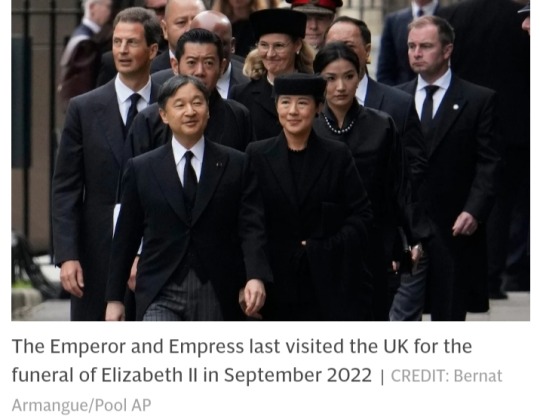
In 2006, King Charles wrote of “the close friendship between the United Kingdom and Japan, which is reflected in the solid bond between the Imperial and Royal Families.”
This visit will further cement that bond – something that the Emperor will reflect on when he privately visits St George’s Chapel at Windsor on June 27 to lay a wreath on the tomb of Queen Elizabeth II.
There, the Garter banner of his father will be above his stall, and the stallplates of his predecessors in their stalls – a permanent record of years of growing friendship.
#Emperor Naruhito#Empress Masako#Queen Elizabeth II#Prince Philip#King Charles III#Imperial House of Japan#Japanese Royal Family#British Royal Family#Japan State Visit 2024#Emperor Hirohito#Sir Esler Dening#British Foreign Office#Garter rosette#British Knights of the Garter#Emperor Mutsuhito#Emperor Yoshihito#Edward VII#Prince Arthur of Connaught#Prince Henry#Duke of Gloucester#Queen Mary#Princess Alexandra#Princess Chichibu#Princess Margaret#Prince William of Gloucester#Sir Fred Warner#US President Gerald Ford#Open Car Drive
15 notes
·
View notes
Text
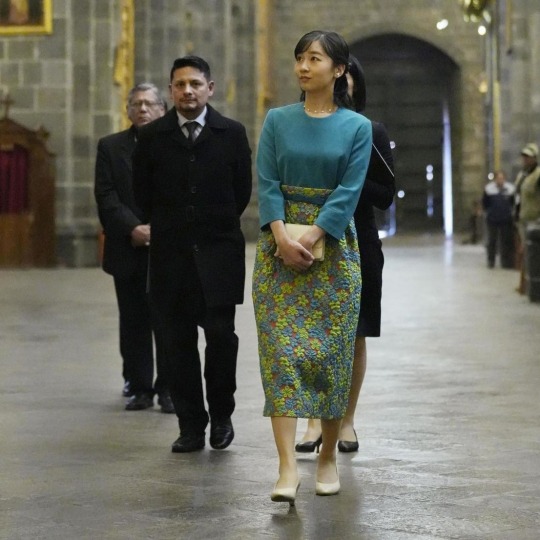
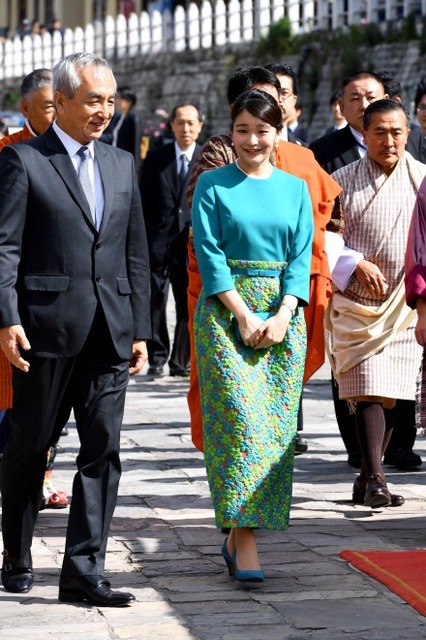
11 notes
·
View notes
Text
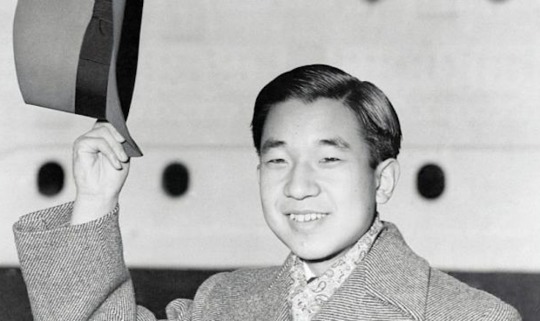

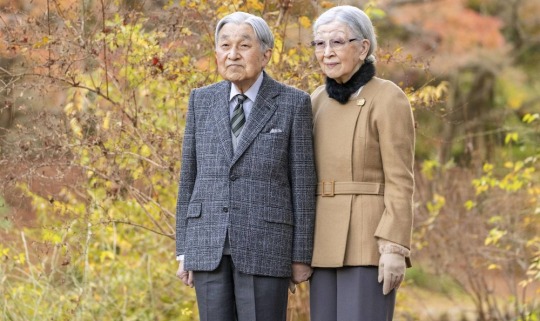
Monarch: Emperor Akihito (Japan) Reign: 7th January 1989 - 30th April 2019 Process of abdication: Passing of the Emperor Abdication Law by the Japanese government Life after abdication: The historic title for abdicated monarchs - Jōkō - was revived for the Emperor. It doesn't translate well and so generally he is referred to as the Emperor Emeritus. He and the Empress moved from the Imperial Palace into a newly renovated home in the grounds of the Akasaka Estate. He continues to receive a state allowance and performs engagements where possible, but his poor health in recent years has limited his duties.
2 notes
·
View notes
Text

May 5th, 2023 || Crown Princess Kiko of Japan attends the Coronation Reception for overseas guests at Buckingham Palace.
6 notes
·
View notes
Photo

✵ October 5, 2014 ✵
Princess Noriko of Takamado & Kunimaro Senge
#Japanese royal family#japanese imperial family#Imperial House of Japan#Japan#Royal Wedding#shinto wedding#shinto
8 notes
·
View notes
Text
1 August 2008
The traditional coronation ceremony of Tonga's King George Tupou V
The British-style church ceremony was attended by over 1,000 people. Among them... Britain's Duke and Duchess of Gloucester, the Crown Prince and Crown Princess of Japan, and Princess Sirindhorn of Thailand.
#duchess of gloucester#duke of gloucester#british royal family#tongan royal family#japanese royal family#thailand royal family
10 notes
·
View notes
Photo
⚜ ⚜ Unvaulted Jewels ⚜ ⚜




♔ Vaulted Jewels Spam ♔
Jewels kept in the royal vaults since 2010
17 notes
·
View notes
Photo

Ayako Diamond Wreath Tiara ♕ Imperial Household Agency following Ayako’s 2018 wedding
43 notes
·
View notes
Text



#Emperor Naruhito#Empress Masako#King Charles III#Queen Camilla#Imperial House of Japan#Japanese Royal Family#British Royal Family#Japan State Visit 2024#Hello Kitty#state visit#state banquet
17 notes
·
View notes
Text
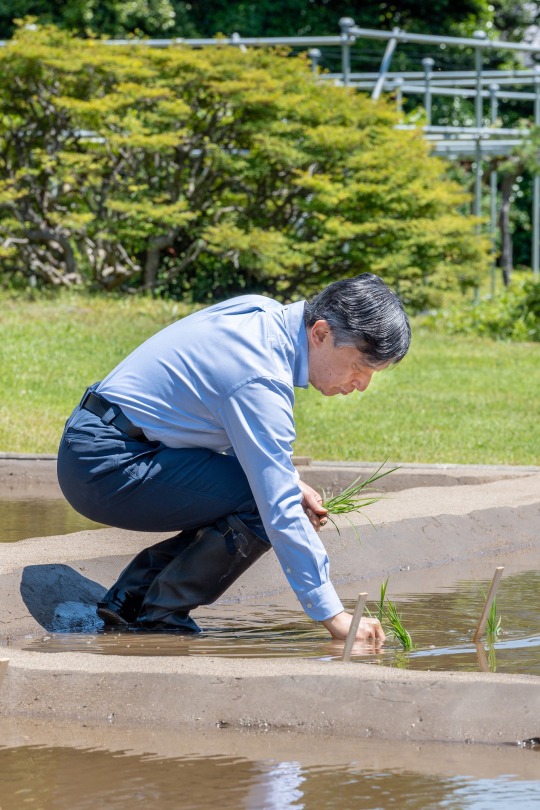
6 notes
·
View notes
Text
Distinguished?





Crown Prince Hussein and Princess Rajwa's wedding family photo with Royals and distigushed guests.
📷 RHC
#jordan royal wedding#royal wedding#will and Kate#dutch royal family#british royal family#danish royal family#swedish royal family#belgium royal family#japanese royal family#spanish royal family#2023
63 notes
·
View notes
Text
There are a few misconceptions on shuro and his behaviors. The reason he was furious at laios for reviving falin using dark magic isnt really that he used dark magic (kabru even poins out shuro would have done the same). But Instead his anger is because he used black magic he put Falins life (as well as everyone elses) in danger because he knows just how the western elves react to black magic and black magic users. As for shuro's feelings towards laios for not picking up on social cues, it was shitty of him to do that however you do need to also take into consideration the kind of culture/life shuro has. He comes from a highly dignified Japanese style royal family, We see that him asking for help saving falin was the first "selfish" request he has ever made. The fact it is considered a "selfish" request speaks volumes on the kind of world that shuro comes from. After shuro and laios fight we see that shuro is actually envious of laios and how he views the world, showing that a portion of his anger isnt really from laios not picking up on his social cues but perhaps more so that laios was ALLOWED to be how he is. Even after their fight shuro offers to give laios sanctuary from the western elves, giving him the bell that when rung would have shuro sending people to go retrieve him and his friends and keep them safe from the western elves. if shuro deeply hated laios he wouldnt have offered this, if he didnt care about laios he wouldnt have offered him a safe place to live if the western elves come after him. i also want to bring up people saying he abandoned asebi/izutsumi. Which is also not true, in his own words when asked about her being left behind. "she will come back to us if she wants to." he explicitly states if she wants to, she will come back. To me this is him letting her make her own choice on what she wants to do with her life. Something that shows to me that i believe shuro has always felt perhaps some form of guilt at her situation but not able to do anything because of who he is and his father and his caretaker with him.
Shuro is not a perfect person, he has his flaws. But he IS a person, thats what people are. We have flaws and make mistakes and have issues that we do wrong on. Shuro is a man living his life and one who makes mistakes, everyone makes mistakes. I wanted to post this and talk about it because sadly some people ar being incredibly hateful about him and people that like him. Which is a shame as it is mostly a misunderstanding. Though i wont lie some of it does feel like its starting to become racist or because of people upset he could get in the way of farcille ship.
#dungeon meshi#shuro#toshiro#laios#laios touden#asebi#people forget he is a repressed japanese man from a feudal royal family#dungeon meshi spoilers#dunmeshi spoilers#spoilers
532 notes
·
View notes
Photo

✵ October 30, 2018 ✵
Princess Ayako of Takamado & Kei Moriya
6 notes
·
View notes